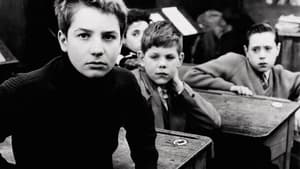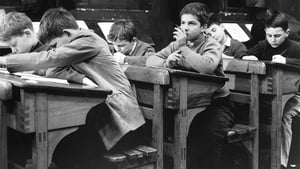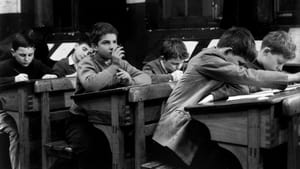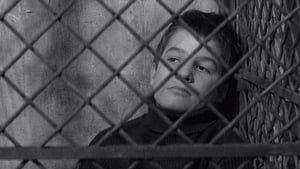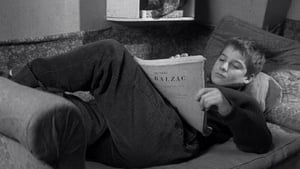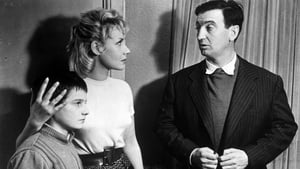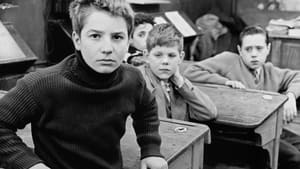Contact: [email protected]
Video Sources 0 Views
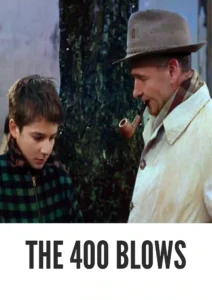
The 400 Blows 1959 First Early Colored Films Version
Synopsis
Unveiling The 400 Blows: A Timeless Masterpiece Revisited

Introduction
In the realm of classic cinema, few films evoke as much reverence and admiration as The 400 Blows (1959). Directed by the visionary François Truffaut, this French New Wave masterpiece has left an indelible mark on the world of cinema. Now, with the release of an early colored version, viewers have the opportunity to rediscover this cinematic gem in a new light. In this article, we delve into the significance of The 400 Blows (1959)’s early colored version and its impact on the landscape of film history.
Check The Full Colorized Movies List
Check Our Colorized Movies Trailer Channel
Understanding The 400 Blows 1959: Director, Cast, and Genre
The 400 Blows (1959) represents a seminal moment in the career of François Truffaut, marking his directorial debut and laying the foundation for a revolutionary new wave of filmmaking. The film follows the poignant journey of Antoine Doinel, a misunderstood adolescent navigating the complexities of youth in post-war Paris. Played masterfully by newcomer Jean-Pierre Léaud, Doinel’s raw vulnerability and palpable sense of alienation captivate audiences, earning him a place among cinema’s most memorable protagonists. Truffaut’s deft direction and keen insight into the human condition elevate The 400 Blows (1959) beyond its coming-of-age trappings, cementing its status as a timeless work of art.
Exploring the World of The 400 Blows 1959: Plot and Characters
Set against the backdrop of 1950s Paris, The 400 Blows (1959) immerses viewers in a world of bustling streets, cramped tenements, and stifling classrooms. As Antoine Doinel grapples with the challenges of adolescence, he finds solace in small acts of rebellion, from petty theft to truancy. Yet beneath his tough exterior lies a sensitive soul yearning for understanding and acceptance. Alongside Doinel, viewers encounter a rich tapestry of characters, each grappling with their own demons and desires. From Doinel’s stern but loving mother to his enigmatic friend René, each character leaves an indelible impression, adding depth and nuance to Truffaut’s masterful narrative.
The Art of Film Colorization
Film colorization, the process of digitally adding color to black-and-white films, has long been a source of debate within the film community. Proponents argue that colorization breathes new life into classic films, making them more accessible to modern audiences. Critics, however, contend that colorization compromises the artistic integrity of the original work, altering the director’s intended vision and distorting the film’s historical context. Despite these concerns, colorized versions of classic films continue to proliferate, prompting viewers to reconsider their stance on this controversial practice.
Early Colored Films: A Brief History
The history of early colored films dates back to the early 20th century, with filmmakers experimenting with various techniques to add color to black-and-white images. From hand-painted frames to two-color processes like Technicolor, these early efforts laid the groundwork for the development of modern colorization techniques. In the decades that followed, advances in technology would usher in a new era of color filmmaking, forever changing the cinematic landscape.
The 400 Blows 1959 and Its Early Colored Version
The decision to release The 400 Blows (1959) in a colorized format represents a bold departure from tradition, inviting audiences to experience Truffaut’s seminal work in a new and unexpected way. While purists may balk at the idea of tampering with a classic, proponents argue that colorization breathes new life into the film, allowing viewers to appreciate its visual beauty in ways previously unimaginable. Whether viewed in its original black-and-white format or its early colored version, The 400 Blows (1959) continues to captivate audiences with its timeless storytelling and universal themes.
The Debate Over Film Colorization
The debate over film colorization rages on, with proponents and detractors fiercely defending their positions. Advocates argue that colorization preserves classic films for future generations, ensuring that they remain relevant in an ever-changing world. Critics, however, maintain that colorization undermines the artistic integrity of the original work, erasing the nuances of light and shadow that define black-and-white cinema. As technology continues to evolve, the debate shows no signs of abating, leaving filmmakers and audiences alike to grapple with the complexities of preserving film history in the digital age.
Examining The 400 Blows 1959 as an Early Colored Film
For fans of The 400 Blows (1959), the prospect of experiencing Truffaut’s masterpiece in color is both tantalizing and fraught with uncertainty. While some may welcome the opportunity to see the film in a new light, others may approach the colorized version with trepidation, fearing that it will detract from the original’s timeless beauty. Ultimately, the decision to embrace or reject the early colored version of The 400 Blows (1959) is a deeply personal one, shaped by individual preferences and attitudes toward film preservation.
Influence and Legacy: The 400 Blows 1959’s Impact on Cinema
The 400 Blows (1959) has left an indelible mark on the world of cinema, inspiring generations of filmmakers and reshaping the course of film history. Truffaut’s intimate portrayal of adolescence paved the way for a new wave of French cinema, influencing directors from Godard to Rohmer. Beyond its immediate impact, The 400 Blows (1959) continues to resonate with audiences around the world, offering a timeless meditation on the trials and tribulations of youth.
Director’s Cinematic Legacy: Beyond The 400 Blows 1959
For François Truffaut, The 400 Blows (1959) was just the beginning of a storied career that would span decades and encompass a diverse array of cinematic achievements. From the romantic whimsy of Jules and Jim to the incisive drama of Day for Night, Truffaut’s films continue to captivate audiences with their wit, warmth, and humanity. As one of the founding fathers of the French New Wave, Truffaut’s influence looms large over the world of cinema, inspiring filmmakers to push boundaries and challenge conventions.
Themes Explored in The 400 Blows 1959
At its core, The 400 Blows (1959) is a deeply personal exploration of the human experience, grappling with themes of alienation, identity, and the search for meaning in a chaotic world. Through the eyes of Antoine Doinel, viewers are invited to confront the complexities of adolescence, from the pain of rejection to the exhilaration of newfound freedom. As Doinel navigates the tumultuous waters of youth, he confronts the harsh realities of life with courage and resilience, ultimately emerging stronger and wiser for the journey.
Reception and Controversy Surrounding The 400 Blows 1959
Upon its release, The 400 Blows (1959) received widespread acclaim from critics and audiences alike, earning the prestigious Prix de la Nouvelle Vague at the Cannes Film Festival. Critics praised Truffaut’s deft direction and Léaud’s captivating performance, hailing the film as a triumph of French cinema. Despite its critical success, however, The 400 Blows (1959) was not without its detractors, with some questioning its depiction of youth and morality. Nevertheless, the film’s enduring legacy has solidified its status as a classic of world cinema, inspiring countless filmmakers and leaving an indelible mark on the medium.
Where to Watch The 400 Blows 1959 Online
For those eager to experience The 400 Blows (1959) in all its glory, the film is readily available on popular streaming platforms such as Amazon Prime Video and the Criterion Channel. Whether viewed in its original black-and-white format or its early colored version, The 400 Blows (1959) promises to captivate audiences with its timeless storytelling and universal themes.
FAQs About The 400 Blows 1959
Q: Is The 400 Blows (1959) based on a true story?
A: While The 400 Blows (1959) draws inspiration from François Truffaut’s own experiences growing up in Paris, the film is not strictly autobiographical. Instead, it offers a fictionalized account of adolescence, informed by Truffaut’s own observations and reflections.
Q: What is the significance of the film’s title, The 400 Blows?
A: The title of the film, The 400 Blows, is a reference to the French idiom “faire les quatre cents coups,” which translates roughly to “raising hell” or “getting into mischief.” It reflects the rebellious spirit of the film’s protagonist, Antoine Doinel, and his propensity for getting into trouble.
Q: What themes does The 400 Blows (1959) explore?
A: The 400 Blows (1959) explores a wide range of themes, including adolescence, alienation, family dynamics, and the quest for identity. Through the character of Antoine Doinel, the film offers a poignant meditation on the challenges of growing up in a world that often feels indifferent and hostile.
Conclusion
As we reflect on the enduring legacy of The 400 Blows (1959), one thing becomes abundantly clear: François Truffaut’s masterpiece continues to resonate with audiences around the world, transcending the boundaries of time and culture. Whether viewed in its original black-and-white format or its early colored version, The 400 Blows (1959) remains a timeless testament to the power of cinema to illuminate the human experience. As we celebrate the film’s legacy, let us heed Truffaut’s call to embrace life’s uncertainties with courage and compassion, knowing that even in our darkest moments, there is always hope for a brighter tomorrow.
